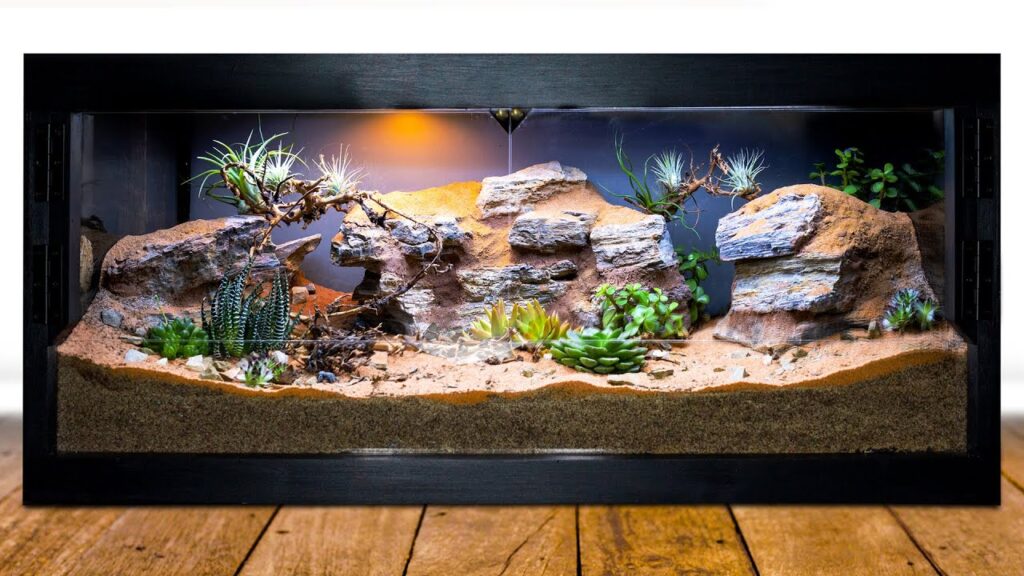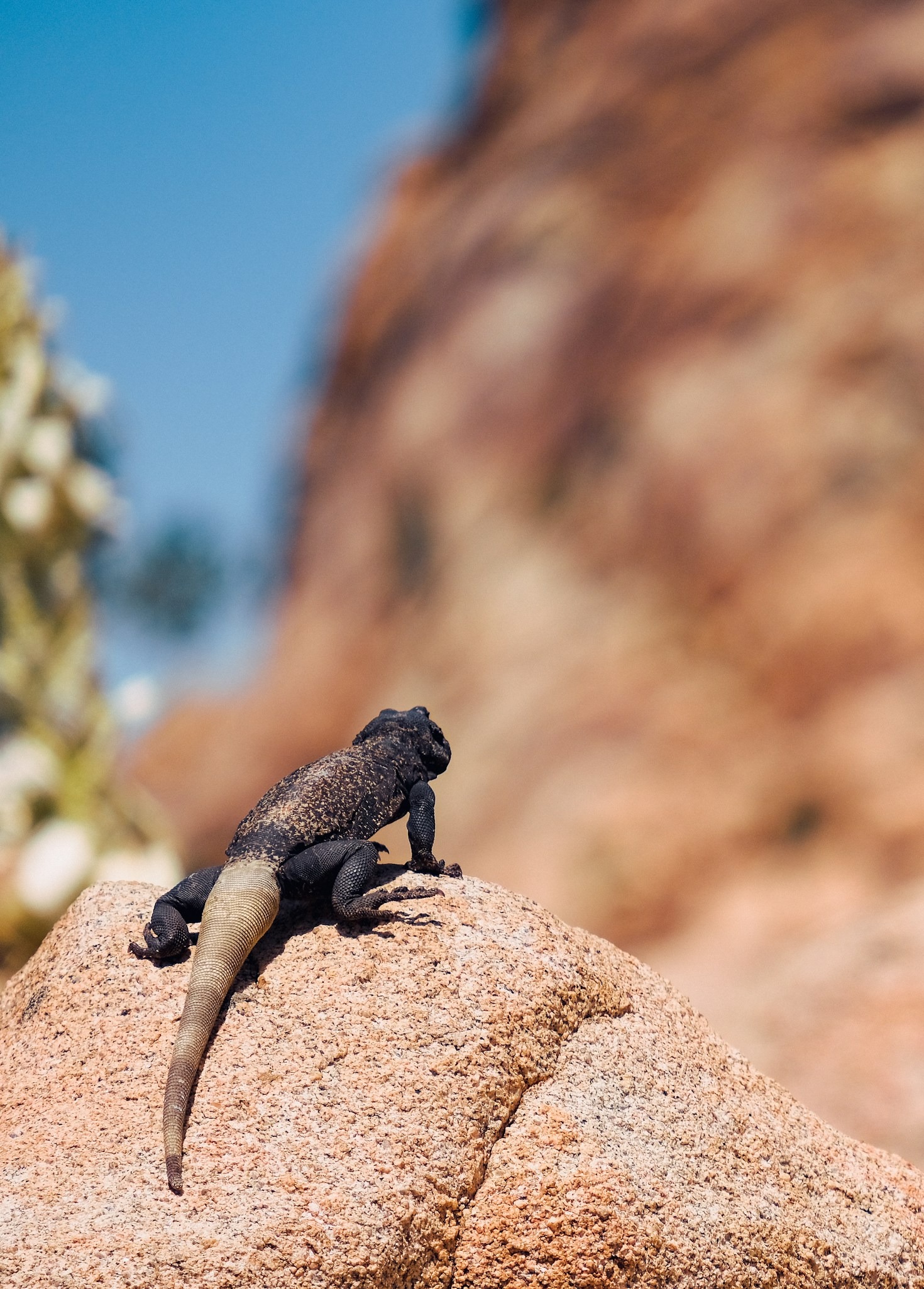Desert reptiles are fascinating, hardy animals that thrive in arid environments—but to keep one as a pet, you must recreate the right conditions at home. Popular desert reptiles include leopard geckos, bearded dragons, uromastyx, and certain species of skinks and snakes. These reptiles are adapted to extreme temperatures, low humidity, and sandy or rocky terrain. Without the correct habitat set-up, your desert pet can suffer from stress, illness, or worse. Here’s how to build the perfect desert environment for your reptile—starting with the essentials.
It’s important to understand the needs of your reptile. Since they are not as expressive as other pets like cats and dogs, it can be hard to tell if they’re actually happy or content. Having just a basic knowledge of what your pet needs can bring peace, the peace of knowing that you aren’t just guessing.
Before setting up any enclosure, you need to understand your reptile’s natural habitat. Leopard geckos are ideal for beginners—they’re small, calm, and don’t require complex lighting. Bearded dragons, while slightly more advanced, are highly interactive and enjoy basking. Uromastyx are herbivorous desert reptiles that thrive in very high temperatures, while desert horned lizards and rosy boas are unique but require more precise care. Matching your habitat to the species’ natural behavior and needs is the first step in getting your habitat just right.


Selecting the Correct Tank or Enclosure
The adequate tank for a desert reptile should replicate open, dry environments while offering enough space to roam. A glass terrarium with a mesh top is the go-to choice. The glass allows for excellent visibility and heat retention, while the mesh top ensures proper ventilation and allows UVB lighting to penetrate effectively. For ground-dwelling reptiles like leopard geckos or bearded dragons, a 20-gallon tank is a minimum, though larger is always better. Always secure the top—many reptiles are surprisingly good climbers!
Light and Heating Controls
One of the most important aspects of habitat set-up for a desert pet is getting the lighting and heating just right. Desert reptiles rely on external heat sources to regulate their body temperature. This means you’ll need a basking bulb that provides intense light and heat during the day, as well as a UVB bulb to support calcium metabolism and prevent bone diseases.
Use a thermometer to create a temperature gradient: a hot basking spot (95–110°F, depending on species) and a cooler end (75–85°F). At night, temperatures can drop slightly, but avoid going below 65°F. Use timers and thermostats to control consistency, and never guess—improper heat is a common reason for desert reptile health issues.

Choosing the Ideal Substrate
The right substrate helps replicate the natural terrain and aids in thermoregulation, shedding, and burrowing. For most desert reptiles, sand might seem natural, but loose sand can be risky—especially for juveniles prone to impaction (a dangerous digestive blockage).
Safer alternatives include:
- Reptile carpet (easy to clean, great for beginners)
- Tile or slate (holds heat well and is visually appealing)
- Packaged desert blends (compressed soil and sand mixtures that are safe if digested)
If you’re experienced and caring for adult reptiles, using calcium-based sand in moderation can work. Always research your species’ specific needs before deciding.
Adding Decorations
Enriching your reptile’s space with the right decorations is about more than looks—it improves their quality of life. Add rocks, logs, and caves to provide hiding spots and basking platforms. These features mimic the natural desert environment and allow your pet to regulate their temperature more effectively. Climbing reptiles benefit from vertical elements, while burrowers need substrate depth and hides.
Live plants generally aren’t suited for desert setups, but artificial plants or dried succulents can add realism without the maintenance. Be sure that all decorations are securely placed—reptiles are known to shift things around, which can lead to injury if items fall.
For more information on different types of decorations and their usefulness/benefits, read here.
Maintaining Humidity and Cleanliness
Even in a dry habitat, some humidity is necessary. A desert tank should stay between 20–40% humidity, depending on the species. Use a hygrometer to monitor levels and mist lightly if needed. Also, offer a shallow water dish for drinking—though many desert reptiles get moisture from food. It is also good practice to spray a little bit of clean water directly onto their food, especially if your pet eats lots of greens.
Cleaning is key to keeping your desert pet healthy. Spot-clean daily and do a deep clean (changing substrate and disinfecting the tank) weekly or monthly. Clean water and food dishes every day.
Conclusion: Build the Perfect Desert Habitat from the Ground Up
Creating the perfect habitat for your desert reptile takes thoughtful planning and the right equipment, but the rewards are enormous. By focusing on the correct habitat set-up, including the right enclosure, heating, lighting, substrate, and decor, you ensure your desert pet not only survives—but thrives. Always research the specific needs of your reptile species, and when in doubt, consult with exotic pet professionals or reptile vets. Your reptile depends on your knowledge and commitment to recreate the desert—inside your home.


Leave a Reply